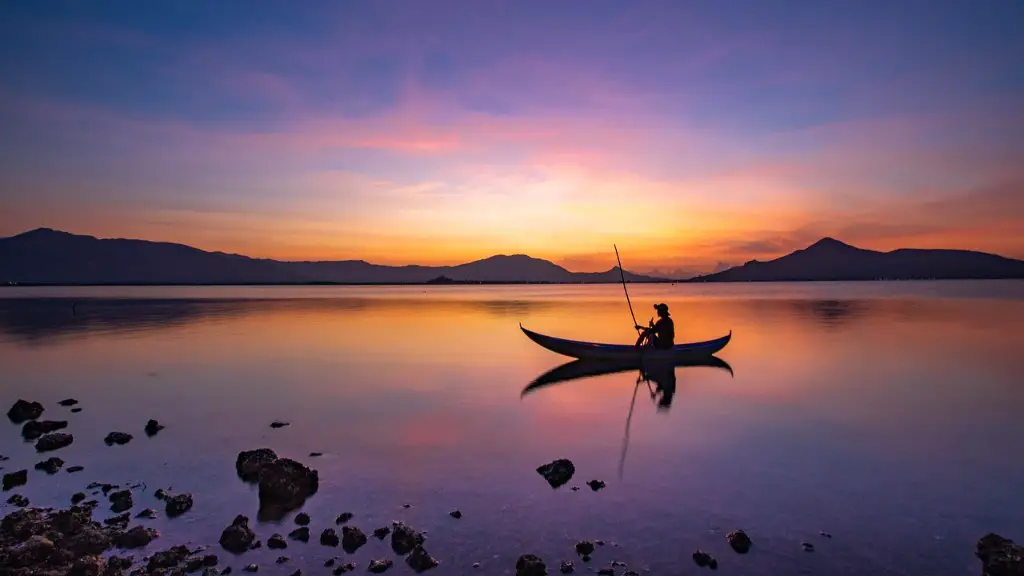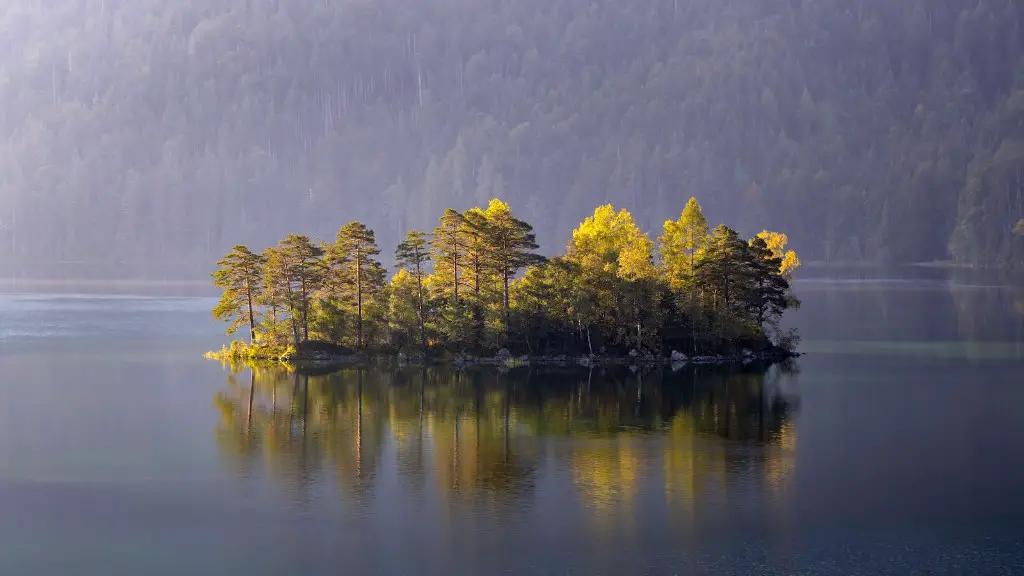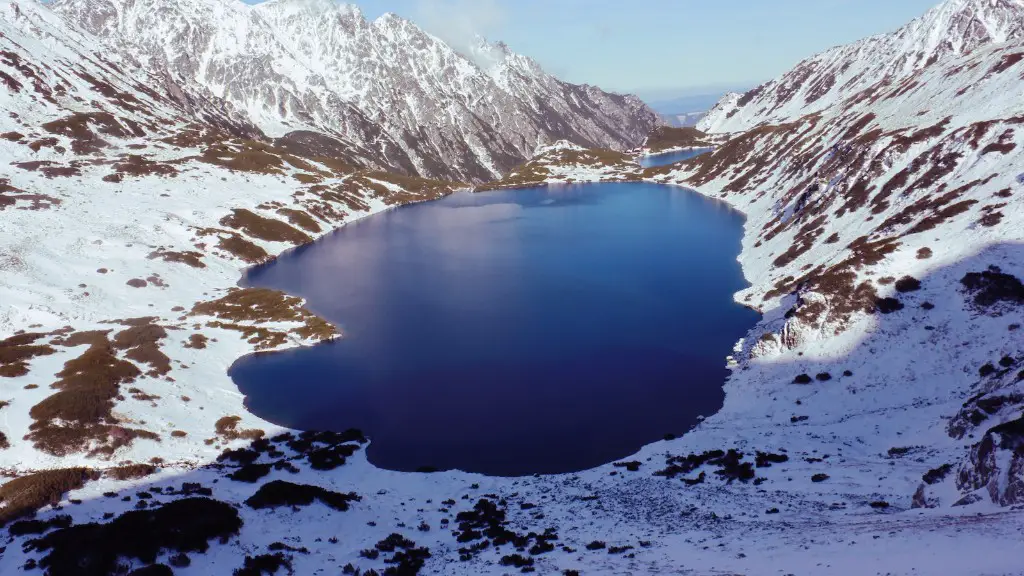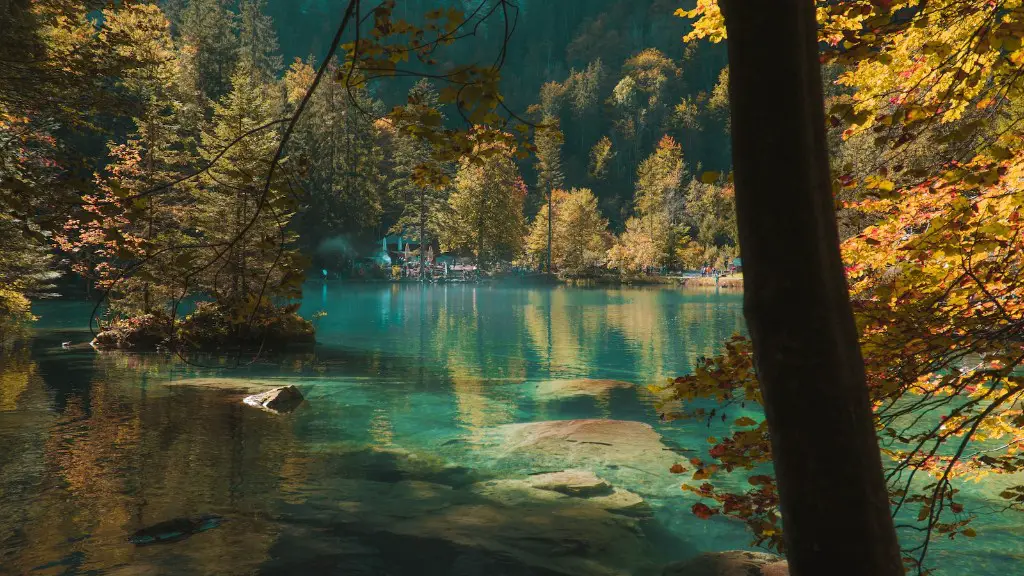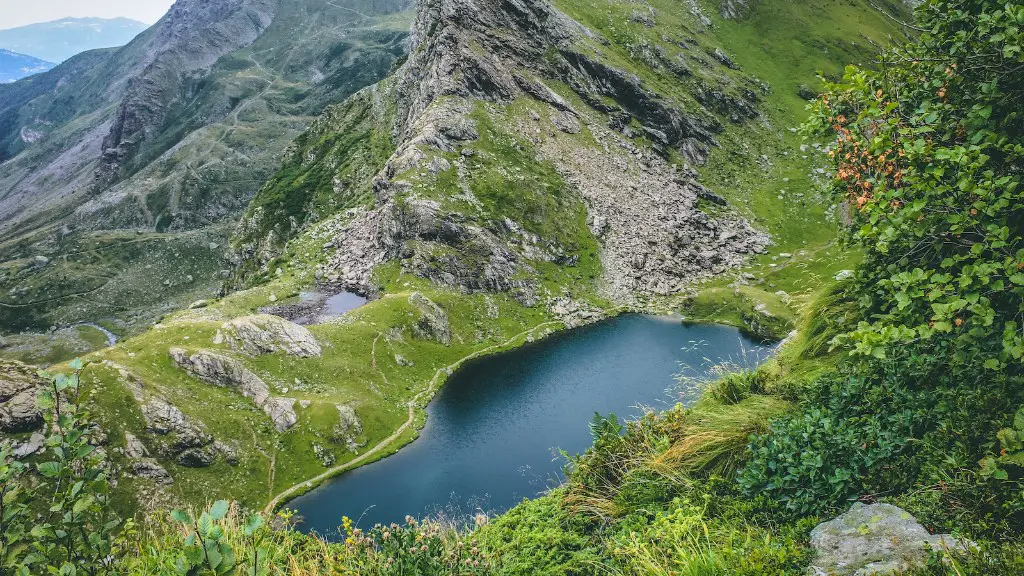Geographic Location
Lake Baikal is located in Southern Siberia, Russia, situated between the Irkutsk Oblast to the northwest and the Buryat Republic to the southeast. It is the oldest and deepest lake in the world, at 25 million years old with a depth of up to 5,387.3 ft (1,642 m). More than one-fifth of all the fresh surface water on Earth is contained in Lake Baikal.
The lake was formed from a unique natural process and is located within an immense basin, known as the Baikal Rift Valley. The rift is responsible for the steep, curved coastline, creating a landscape of beautiful and unique geological features, making it a valuable source of scientific study for researchers around the world.
The lake itself is of extraordinary size, stretching for 396 mi (637 km) from north to south and 79 mi (127 km) wide. A major part of its unique beauty is the presence of the 336 islands and rocky outcrops scattered across its surface.
Animals and Plants
The lake is home to more than 1,700 species of vascular plants and thousands of species of animals and fish. Baikal is also home to an endemic species of seal, known as the Baikal seal. The lake also has an extremely diverse and varied underwater landscape, consisting of unusual rock beds and algae deposits made out of calcium carbonate.
In addition to the seals, the lake supports a large number of fish groups, such as extended family of whitefish, gobiidaes, sturgeons, salmon and suckers. The lake is also home to several species of birds, including ducks, pelicans and cormorants.
The lake is also home to numerous unique and rare species of plants, including marsh saffron and water pepper. Near the water’s edge, and in the shallow areas, lush beds of water lilies, rushes and sedges can be found.
Water Quality
The water of Lake Baikal is of extraordinary quality because it is made up of snow and ice melt, which gives the lake an especially high level of cleanliness. The lake is also known for its pristine and clear waters, something that has been preserved through a rigorous environmental protection efforts in the region.
The water in the lake isn’t just free of any pollutants, but it is also exceptionally clear, allowing visibility of up to a mind-blowing 80 feet (24 meters). The unique chemistry of the lake, along with an absence of any surface drainage, has created a powerful environment, able to support and sustain life in an immensely diverse and abundant array of forms.
Cultural Significance
For centuries, Lake Baikal has held a special spiritual and cultural value for the indigenous people in the region. Many have regarded it as a magical and mystical place since time immemorial, with numerous myths and tales of mythical creatures, springs and palaces located near its shores and beneath its waters.
Lake Baikal is also home to the Buryat people, a Mongolian cultural and ethnic group. The Buryats revere the lake, revering it as a symbol of their culture and spirituality. The lake is also an important place in Russian culture, with a number of important festivals taking place near its shores, including the annual Lake Baikal Festival and the White Sun Festival.
Protected Status
Lake Baikal has been named a UNESCO World Heritage Site in 1996, due to its unique ecology and wildlife. This listing serves to protect the lake and promote responsible stewardship of its resources by the local governments, fishing and forestry industries and other stakeholders.
The lake is also a part of the Lake Baikal Nature Park, which ensures its protection as well as promotes the conservation of its rare species and other valuable assets. Additionally, numerous efforts are made across the region to ensure water quality is maintained and to reduce any human activity which could have an adverse effect on the lake.
Tourism
The breathtaking beauty of Lake Baikal makes it an increasingly popular tourist destination with an array of activities such as boating, fishing and sightseeing on offer. Due to the fragile environment of the lake, authorities have implemented strict regulations on tourism and developments, but it continues to draw visitors from all over the world.
The largest population center around Lake Baikal is Irkutsk, from where tourists can easily access tourist boats, fishing boats, water buses and air craft. During winter, the lake is open to ice fishing and snow mobiling, providing an entirely different perspective on the lake and its wildlife.
Economy
The economy of the towns and villages close to Lake Baikal depend heavily on the lake, not only for its tourism potential but also for its sources of food and resources. The lake supports 44 commercial fish species, which are both locally important for food and form a source of export for the lake’s economy.
Lake Baikal is also a major source of hydroelectric power for the region, powering some of the most densely populated areas in Southern Siberia. Dozens of power plants and a hydroelectric dam have been constructed close to the lake in recent years and there are plans to build even more.
Environmental Concerns
The human population of the region is increasing rapidly and with it comes environmental concerns. The vast majority of inhabitants live on the shores of Lake Baikal and have an enormous effect on the area. Local industries have caused a serious decrease in the water quality of the lake, along with a number of other environmental issues such as biodiversity loss, deforestation and poaching.
The Russian government has taken steps to protect the lake and its surroundings by instituting a number of environmental and conservation measures, but more can still be done as the region continues to struggle with the effects of industry and population growth.
Environmental Conservation Efforts
In recent years, there has been an increased effort by locals, NGOs and government institutions to protect the environment. Numerous educational and awareness-raising campaigns have been launched to educate the public about the need for conservation and the importance of sustainable development.
Several efforts have been put in place to reduce pollution and increase sustainablity. The authorities have put up signs to protect wildlife and seashores, there have been local campaigns to reduce fishing and hunting, and the local government has established laws that prohibit the construction of unnecessary industries or factories.
Additionally, government institutions, NGOs, local and international investors have been working to increase investment in renewable energy, with a particular focus on hydroelectric power. This has the potential to generate green energy while providing jobs and financial security to locals, making a more sustainable future for the region.
